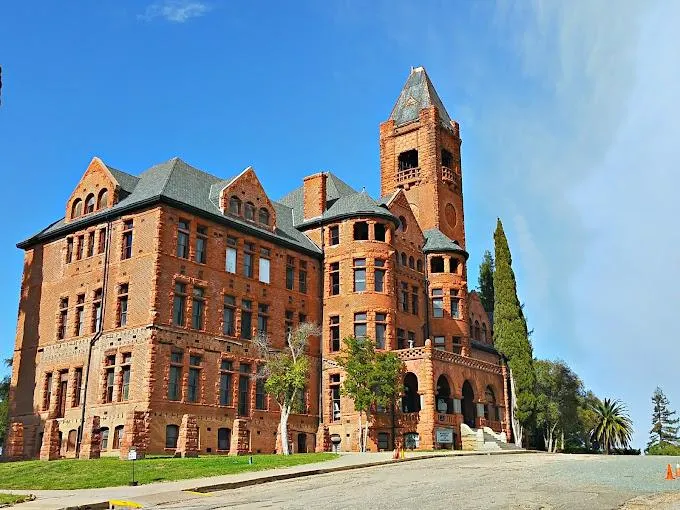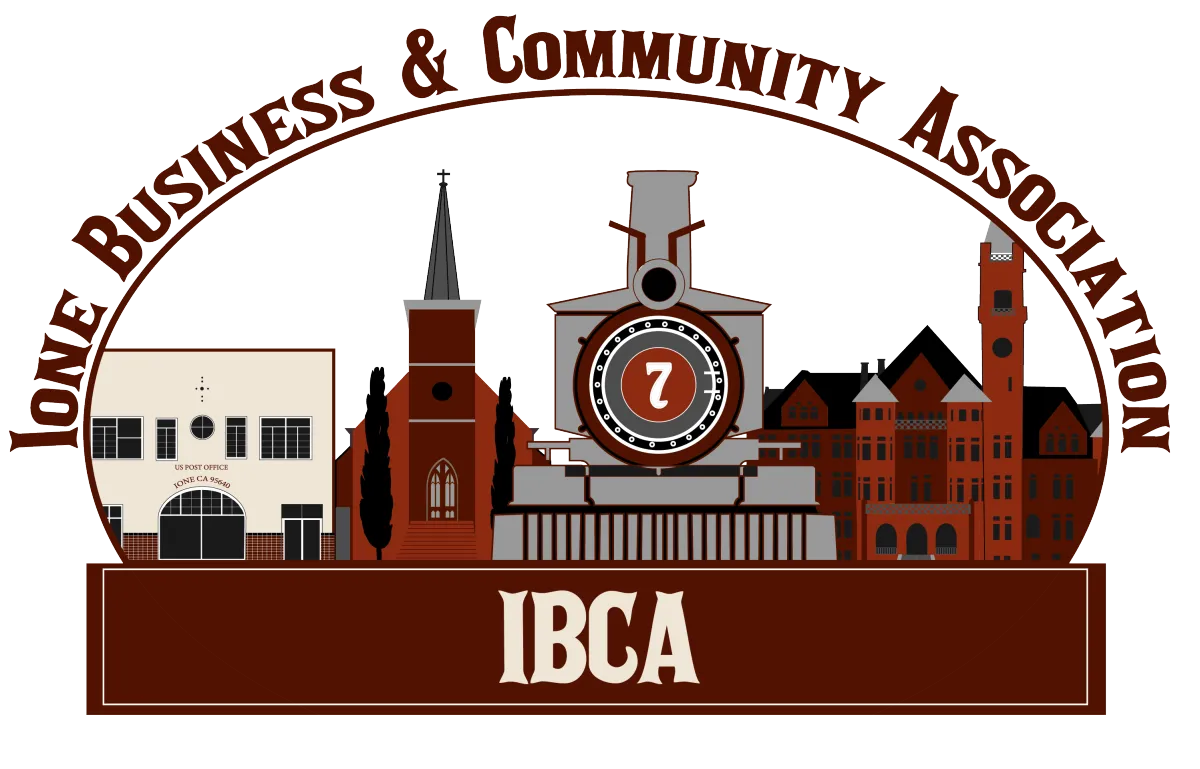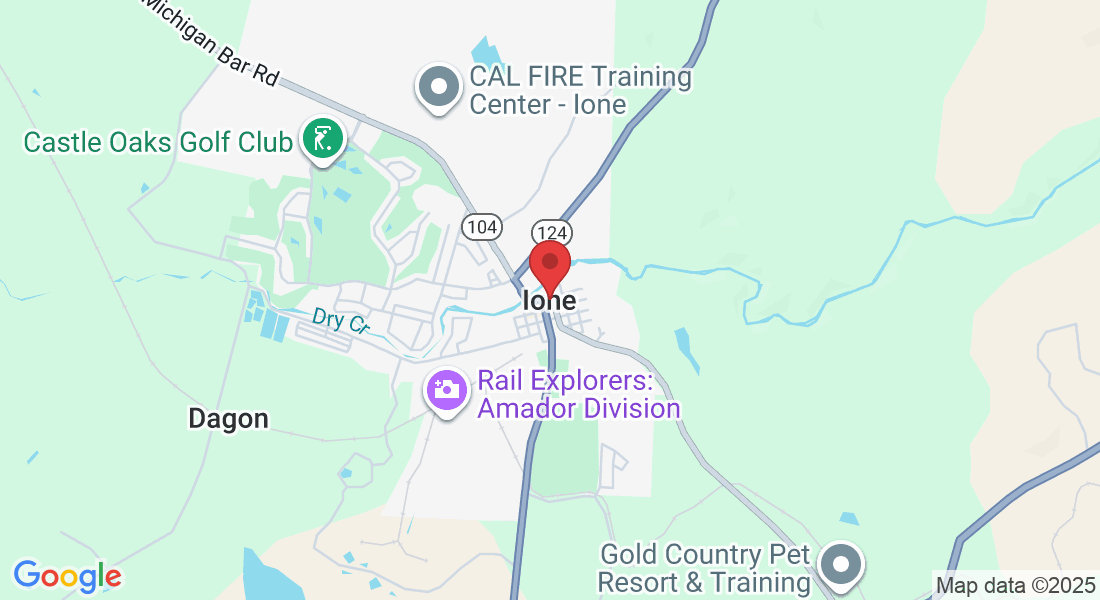History of Ione
Ione is located in the fertile Ione Valley, which is believed to be named by Thomas Brown around 1849 after one of the heroines in Edward Bulwer Lytton's Drama "The Last Days of Pompeii".
During the days of the Gold Rush, the miners knew the town by the names of "Bedbug", and "Freezeout". Unlike other communities in Amador County, which were founded on gold mining, Ione was a supply center, stage and rail stop, and agricultural hub.
The Town of Ione continued to grow and prosper after its gold rush founding. The first school was built in 1853. The historic Methodist Church was organized in 1853 and the structure was completed in 1862.

The first flour mill was built in 1855. The first
brick building was built by Daniel Stewart in 1855 for his general merchandise store and is still owned by the same family.
At the centennial of 1876, Ione had a population of about 600 which included about 100 Chinese who lived in Ione's Chinatown. The town included one public school, 4 churches, 4 general stores, one meat market, one laundry, one brewery, a restaurant, a millinery shop, an art gallery, six saloons, a drug store and barber shop, and many other business establishments. The centennial also celebrated the completion of the railroad to the town of Ione. The centennial celebration was the beginning of what is now known as the Ione Homecoming. This annual celebration has been held during the month of May almost every year since that first Centennial celebration in 1876 and is now held on the second weekend in May annually.
The City of Ione was incorporated as a General Law City in 1953 and is now the largest city in Amador County.
The Preston School of Industry, known as "The Castle", was built between 1890-1894. It was established by the State Legislature as a progressive action toward rehabilitating, rather than simply imprisoning, juvenile offenders. The plans for the school were ambitious with the original plans showing 77 rooms on five floors. The administration building, which eventually came to be called the Preston Castle, would be the most significant example of Romanesque Revival architecture in the Mother Lode. On June 13, 1894, the first wards were accepted at the Preston School of Industry, and the school was proclaimed officially opened on July 1, 1894.
The Preston School of Industry remained open until 1960 when new facilities for the school were completed.
The building remained vacant and fading into disrepair until September 10, 2001 when The Preston Castle Foundation received a fifty-year lease for the property. The Preston Castle has also been named a California State Historical Landmark (#867) and is listed on the National Register of Historic Places (NPS-75000422). Dave Brubeck, the famous jazz pianist, lived for many years in Ione and in 1998 scored a video tour of the castle called "A Castle's Song", which was sold to help fund the restoration efforts.

The Castle currently offers historical tours every Saturday, April through September. Special events are also hosted here throughout the year, and there are several vantage points around Ione for photographing this famous landmark. For event and tour information visit their website https://prestoncastle.org/
The Ione Community Cemetery, next to Howard Park on Church Street, reflects the pioneer history of Ione and dates back to 1852. The Catholic Cemetery is across the street. "Iron Ivan", located in the park behind City Hall on Main Street, was the seventh and last steam engine used by the Amador Central Railroad.
More information about the City of Ione can be found on the city's website. https://www.ione-ca.com/

